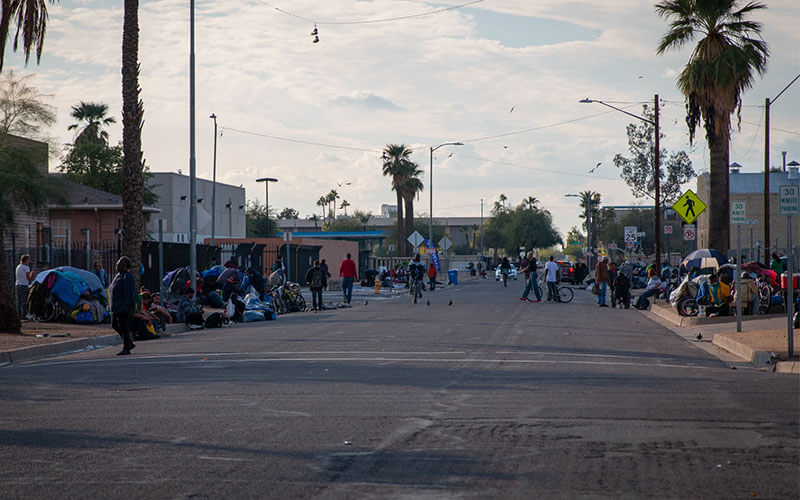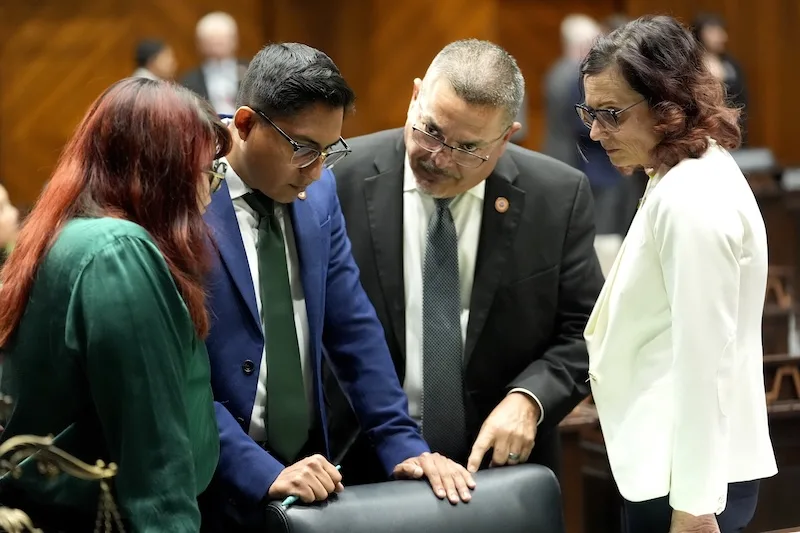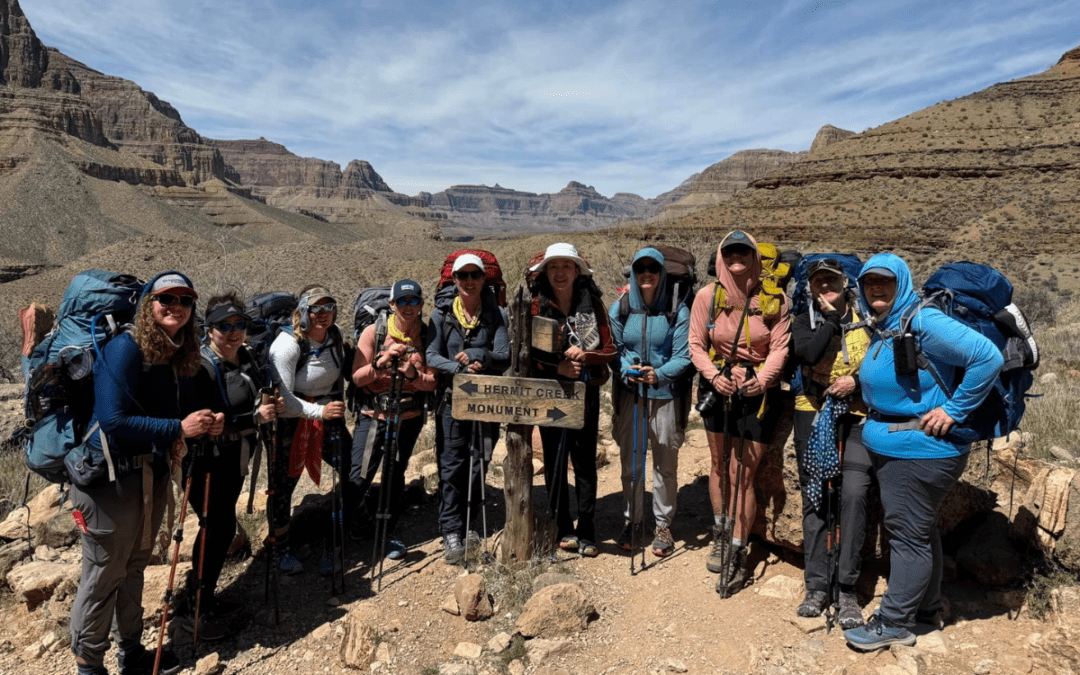
Long lines and unsafe conditions leave the city’s homeless residents skeptical of finding help at shelters.
Government employees worked with volunteers throughout Maricopa County to conduct its annual homelessness count on Tuesday as part of a national effort to track the county’s unsheltered inhabitants.
Led by Maricopa County Association of Governments, the Point-in-Time Count takes place every January, and provides a snapshot of how many individuals are experiencing homelessness at any given time. An edstimated 700 volunteers went through every alleyway, park, and street corner in a designated area Tuesday morning, searching for people.
For the survey, volunteers asked respondents a series of questions, including how long they have been homeless, where they stay at night, and if they would like to be connected to homeless services.
“They can’t help,” Ash Spoonmore responded when asked by a volunteer if she wanted any assistance from the city of Phoenix. “They don’t want me, and I don’t need them.”
Help (Not) Wanted
Last year’s Point-in-Time Count found that on any given night, 4,578 people are experiencing homelessness in Phoenix. Spoonmore makes up 48% of the homeless population in the city that is unsheltered. But even though Spoonmore had been living unsheltered for five months, she told volunteers she had no interest in staying at a shelter.

“They’re too far and too full,” Spoonmore said.
The nearest shelter to Spoonmore that has beds for single women is the Central Arizona Shelter Service (CASS) in downtown Phoenix, seven miles from where she’s staying. More than 7,000 people stayed at CASS in 2019. But with only 470 beds available, the shelter has to turn people away nearly every night. An overflow shelter with 200 beds was erected in 2006, but closed eight years later due to building code violations.
Spoonmore said she mainly stays in abandoned buildings in the area. It’s safer than a shelter, and it allows her stay in her neighborhood where she’s more comfortable.
Dealing With The Pain
“Abandoned Building” is one of many options the survey has for the question: “Where did you sleep last night?” Some of the other choices include sleeping on the street, in a vehicle, in jail, or under a bridge.
For Brandon Smith, the preferred place to sleep is in a park.
“It’s a little quieter there,” Smith said. “And the grass is soft. Softer than the sidewalk.”
Smith answered questions as he slowly made his way to a bus stop. He shivered in the cold morning air, pushing a shopping cart that held everything he owned.
Both his legs were in constant pain, Smith told the volunteer, as a result of previous injuries that didn’t heal properly. The shelter is too far for Smith, who tries not to stray from the McDonalds on a nearby corner. He wasn’t going to the bus stop to get on the bus; he just wanted the enclosure to protect him from the wind.
“I’ve never been down to the shelter, but that’s alright,” Smith said. “I’ll be okay.”
Like Spoonmore, Smith also turned down the offer to get connected with city services. Both expressed a preference for staying in an area where they felt comfortable, and both had more confidence in fending for themselves. They don’t consider working with the city to be worthwhile.
Finding Ways to Help
Officials say the Point-in-Time Count is an important way to get a pulse on those experiencing homelessness. In a press release, MAG stated that the information gathered helps “to better understand root causes of homelessness, including what leads to chronic homelessness, what leads to first-time homelessness, and the causes of veteran and family homelessness.”
“These aren’t just numbers,” Tempe Mayor Mark Mitchell emphasized in MAG’s statement. “Our job is to better understand where we can intersect people along these pathways, and change the course of homelessness in our region.”
The Point-in-Time Count is a requirement to receive federal funding for services relating to housing and homelessness issues. The data retrieved from these counts is used locally and nationally to track changes in the size and makeup of people experiencing homelessness. The U.S. Department of Housing and Urban Development has been using this method to track homelessness in the U.S. since 2005.
Results for the Point-in-Time Count are expected to be available to the public in April 2020. Officials hope to use the results to secure more federal funding and better understand the state of homelessness in local communities.
Politics

Democrats clear path to bring proposed repeal of Arizona’s near-total abortion ban to a vote
Democrats in the Arizona Senate cleared a path to bring a proposed repeal of the state's near-total ban on abortions to a vote after the state's...

It’s official: Your boss has to give you time off to recover from childbirth or get an abortion
Originally published by The 19th In what could be a groundbreaking shift in American workplaces, most employees across the country will now have...
Local News

How Arizona women are helping each other gain confidence in outdoor adventuring
Two female-oriented outdoors groups in Arizona encourage women to get on the trails, and to not be afraid of doing it solo every once in a while....

Why these Arizona parents choose to take their kids to Drag Story Hour
Parents who seek out a safe, diverse, and inclusive space for their children to get involved in early literacy head to Drag Story Hour. Tania G.*...





